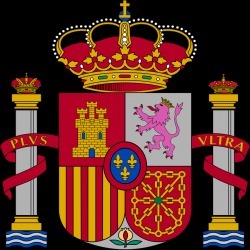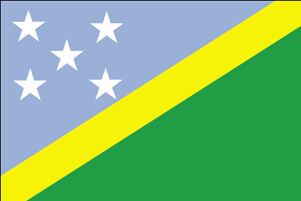The current Spanish flag it consists of a rectangle with two red bands at the ends and a yellow band where a shield is located.
The flag has its origins in the 18th century and was established as a national pavilion by Queen Isabel II.

Spanish flag
Meaning
The flag of Spain has two colors: red and yellow.
Red symbolizes courage and sacrifice; while yellow refers to nobility and wealth.
The shield brings the shields of some kingdoms that were unified to form the country: Castile, Leon, Aragon, Navarre and Granada.
Likewise, there are symbols that refer to the history of the country and the Spanish royal house.
The shield

Spain flag shield
Above the yellow band is the coat of arms composed of:
- A castle symbolizing the Kingdom of Castile;
- A stylized lion representing the Lion Kingdom;
- A yellow and red vertical striped shield belonging to the Kingdom of Aragon;
- A shield with a red background with intertwined chains symbolizing the Kingdom of Navarre;
- Below, a pomegranate (grenade, in Spanish) on a white background, representing the Kingdom of Granada;
- In the center, the coat of arms of the House of Bourbon in Spain, consisting of three fleur-de-lis on a blue background;
- Above it is a crown that symbolizes both monarchy and national sovereignty. The cross goes back to Christianity;
- Next to it are the “Columns of Hercules” (the Strait of Gibraltar) that symbolize the limits of the known world until then.
- They carry the motto "Plus Ultra” (Further), which has its origins with the discovery of lands in America;
- The columns are crowned by the imperial crown of the Holy Roman Empire and the Spanish Royal crown and represent the country's history as kingdom and empire.
History
In the 18th century, the Spanish flag was white and bore the royal shield. This caused a lot of confusion on the high seas where the white color doesn't stand out in the landscape.
Therefore, in 1785, King Charles III called a competition to change the pavilion. The proposal of red and yellow horizontal bands that would be adopted by the Spanish Navy won.
Only during the reign of Queen Isabel II, in 1843, was this flag declared as national.
The Spanish flag underwent modifications as the country changed its government regime. So we have the republican flag that suppressed the lower red band for a purple one.
Also, during the Franco regime, the shield was replaced by the eagle, an imperial symbol.
Thus, the current Spanish flag was made official in 1981, when the country returned to democratic rule and adopted the parliamentary monarchy.
Learn more about other banners:
- Brazil's flag
- flag of argentina
- France flag
- flag of japan
- United states's flag
- England's flag
- Paraguay Flag
- Flag of Portugal
- Russian flag
- Chile flag

